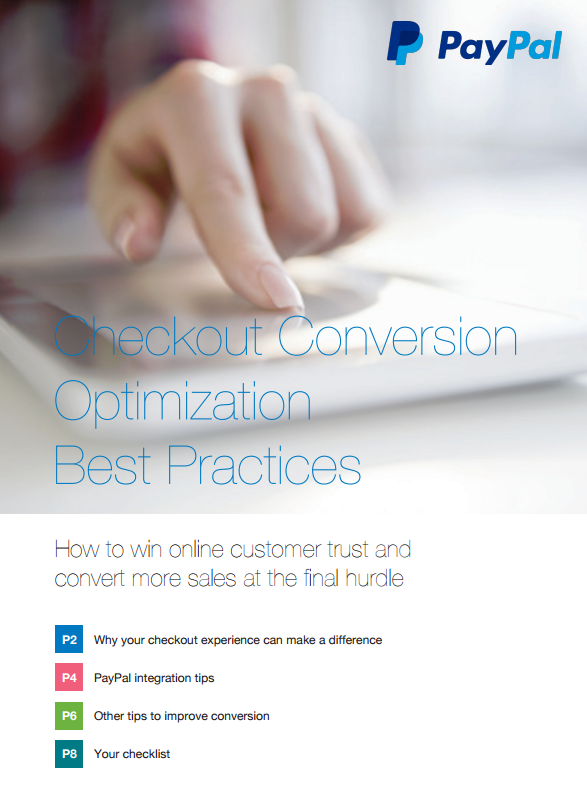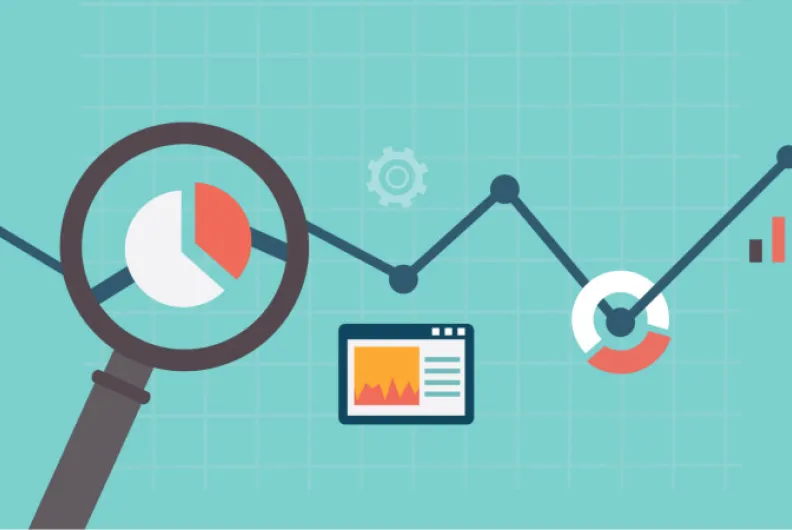Don’t Let Bad Conversion Rates Get You Down - Here’s 5 Ways
These days, B2B and B2C organizations have a wealth of options that will help improve on-site conversion rates. For the benefit of anyone who may need, conversion rate optimization (CRO), in simple terms, means unconvering conversion deficiencies (against web and business goals) then, improving them. To learn more about CRO, check out Business2Community's article, "Demystifying Conversion Rate Optimization". We’ll explore each of the 5 content marketing ideas above to help inspire stronger content conversion solutions.  (Image Source) Among the several conversion opportunities available, there are some usual-suspect options you can find across high-performing websites:
(Image Source) Among the several conversion opportunities available, there are some usual-suspect options you can find across high-performing websites: 
 Knowing how consumers use a web site, businesses can design it to stimulate consumers into taking calls to action and becoming actual customers. By funneling consumers into customers, with the collected data, businesses can optimize their conversion rates by targeting consumers ready to buy. PayPal’s guide for Checkout Conversion Optimization Best Practices (PDF) states that 37% of consumers who make it to checkout will leave the site to compare prices before making a purchase. Another 36% leave because they don't have the money at the time. While using A/B testing, a business could design an ordering or checkout page that include prices from other sources, or similar products with different prices. This might encourage those 37% to actually buy them. That 36% who don't have the money at the time might respond if asked to sign up for a reminder notice to buy it later. Maybe they receive it as a text message on their phone or an email on their tablet or computer. It could also encourage more shopping by showcasing new products or discounts currently offered. By providing a path for consumers to work through when browsing a site, businesses can place marketing cues which outline the attraction for buying products, creating accounts, or interacting on the site.
Knowing how consumers use a web site, businesses can design it to stimulate consumers into taking calls to action and becoming actual customers. By funneling consumers into customers, with the collected data, businesses can optimize their conversion rates by targeting consumers ready to buy. PayPal’s guide for Checkout Conversion Optimization Best Practices (PDF) states that 37% of consumers who make it to checkout will leave the site to compare prices before making a purchase. Another 36% leave because they don't have the money at the time. While using A/B testing, a business could design an ordering or checkout page that include prices from other sources, or similar products with different prices. This might encourage those 37% to actually buy them. That 36% who don't have the money at the time might respond if asked to sign up for a reminder notice to buy it later. Maybe they receive it as a text message on their phone or an email on their tablet or computer. It could also encourage more shopping by showcasing new products or discounts currently offered. By providing a path for consumers to work through when browsing a site, businesses can place marketing cues which outline the attraction for buying products, creating accounts, or interacting on the site.
 (Image Source) Among the several conversion opportunities available, there are some usual-suspect options you can find across high-performing websites:
(Image Source) Among the several conversion opportunities available, there are some usual-suspect options you can find across high-performing websites: - Defining Buiness, Marketing & User Goals
- Investing in Web Personalization
- Expanding Brand Authority & Trust
- Conducting A/B Split and/or Multivariate Tests
- Funneling Visitors Into Opt-In Consumers
Defining Business, Marking & User Goals
It’s difficult to measure achievement without first defining goals of some kind. This is as true with conversion rate optimization as it is with any other digital marketing effort. Goals give us an incentive to really discover the best paths to achieve stronger outcomes. Goals provide businesses a common method by which they can develop better results from their teams. Rolling up your sleeves to create higher performing content is challenging work. They should describe a realistic achievement and should support the talents and skills of everyone involved. They shouldn't focus on one person's accomplishments while diminishing another's. Goals should celebrate the idea that once they meet their match, another set of challenges are there to push for stronger outcomes.Investing In Web Personalization
Web personalization is one of the most valuable, high performing strategies a business can leverage. Web personalization connects relevant information to the right audiences. By leveraging user consumer data we can deliver better, personalized content experiences through changes in content, distribution, even style and layout. The goal in personalizing websites is to achieve deeper audience connections while fostering higher conversions rates. Web personalization will take time, effort and strategy in order to execute successfully. Businesses will get face-to-face with their users via data, segmentation, content types and delivery. To get started with web personalization, I recommened folks get their hands on Marketo's Definitive Guide to Web Personalization. This is great resource intended to give you a 101 lesson on:
- How web personalization helps marketers drive results
- How to create a web personalization strategy
- The types of web personalization
- What content you need to support web personalization
- How to test and optimize your web personalization
- How to measure your success
- The team and tools you need in order to implement web personalization
Source: Marketo
Web Personalization Tools
There's several industry-leading tools available business can research and use. I've covered some of the best tools available:- Sauce.ly
- Mently.co
- Quibit.com
- AtYourFunction.com
- Storymail.nl/en
Expanding Brand Authority & Trust
Consumers don't want to see a reminder that their information has exposure to risk. They want to feel reminded that the solution for their troubles is right in front of them. This is why trust is so important. Trust provides an incentive for consumers to interact with an online business and become customers. A great way to establish trust is through a well-worded, easy to read privacy policy. Consumers are vigilant about protecting their privacy and information, and many read these policies to understand what businesses do with their information. The privacy policy is great for placing any technology references like encryption used in purchases or what kind of malware checks businesses run on their servers. Privacy policies also establish how businesses store their information and what guards are in place to prevent a break in security. When consumers feel their information is safe against unauthorized access, they are more likely to contribute, become members of the site, or buy goods and services. Trust brings in optimum conversions.Conduct A/B Split and/or Multivariate tests
A/B testing is the practice of providing content differently to consumer groups and deciding what optimizes conversions. Changes to the content include the wording, positions for menus, links, pictures, or video, and the style of the layout like colors and fonts. What this allows businesses to achieve is great. It lets businesses understand how consumers react to changes in content which encourage participation and active conversions. Changes as simple as one word can produce huge results. Instead of commanding customers with the word "Order", businesses can instead inform them that products are available with the words "Get" or "Receive". These changes help to reduce anxiety with consumers and lets them feel at ease, to have trust. Web analytics can show just how much trust by giving specific metrics like page retention, click rates, or return ratio. These data give businesses important clues as to how consumers are comfortable with the offers that businesses have available.Funnel Visitors into Opt-In Consumers
 Knowing how consumers use a web site, businesses can design it to stimulate consumers into taking calls to action and becoming actual customers. By funneling consumers into customers, with the collected data, businesses can optimize their conversion rates by targeting consumers ready to buy. PayPal’s guide for Checkout Conversion Optimization Best Practices (PDF) states that 37% of consumers who make it to checkout will leave the site to compare prices before making a purchase. Another 36% leave because they don't have the money at the time. While using A/B testing, a business could design an ordering or checkout page that include prices from other sources, or similar products with different prices. This might encourage those 37% to actually buy them. That 36% who don't have the money at the time might respond if asked to sign up for a reminder notice to buy it later. Maybe they receive it as a text message on their phone or an email on their tablet or computer. It could also encourage more shopping by showcasing new products or discounts currently offered. By providing a path for consumers to work through when browsing a site, businesses can place marketing cues which outline the attraction for buying products, creating accounts, or interacting on the site.
Knowing how consumers use a web site, businesses can design it to stimulate consumers into taking calls to action and becoming actual customers. By funneling consumers into customers, with the collected data, businesses can optimize their conversion rates by targeting consumers ready to buy. PayPal’s guide for Checkout Conversion Optimization Best Practices (PDF) states that 37% of consumers who make it to checkout will leave the site to compare prices before making a purchase. Another 36% leave because they don't have the money at the time. While using A/B testing, a business could design an ordering or checkout page that include prices from other sources, or similar products with different prices. This might encourage those 37% to actually buy them. That 36% who don't have the money at the time might respond if asked to sign up for a reminder notice to buy it later. Maybe they receive it as a text message on their phone or an email on their tablet or computer. It could also encourage more shopping by showcasing new products or discounts currently offered. By providing a path for consumers to work through when browsing a site, businesses can place marketing cues which outline the attraction for buying products, creating accounts, or interacting on the site. 






